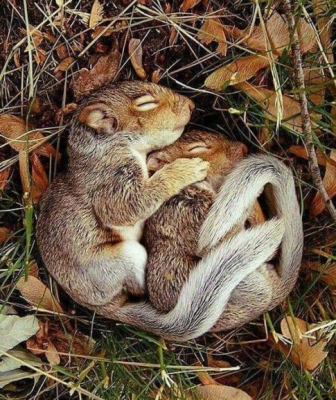
Sleeping Through Winter
Every autumn, a woodchuck eats large amounts of food, curls up into a ball, and goes to sleep in its underground home. But the woodchuck’s sleep isn’t like your sleep. The woodchuck’s heart and breathing slow down and nearly stop. Its body changes. Most of the time, the woodchuck’s body is warm because it is a warm-blooded animal. But the woodchuck’s body grows cold before it goes into its long winter sleep. As it sleeps, its body lives off the energy from the extra food it ate in autumn.
The woodchuck’s sleep is called hibernation. Ground squirrels, bats, hamsters, hedgehogs, and other warm-blooded animals also hibernate.
Snakes, turtles, frogs, and toads hibernate in a different way. A snake is cold-blooded. Its body is just as warm or as cold as the air around it. So when the weather grows colder, a snake’s body grows colder. The snake tries to get warm by crawling into a hole. But as the weather becomes colder, the snake’s body becomes cold and stiff. Its heart and breathing nearly stop.
When spring comes, the woodchucks and other warm-blooded animals wake up. The snakes warm up, too, and crawl out of their holes. The world is alive again!
Picture Credit : Google

